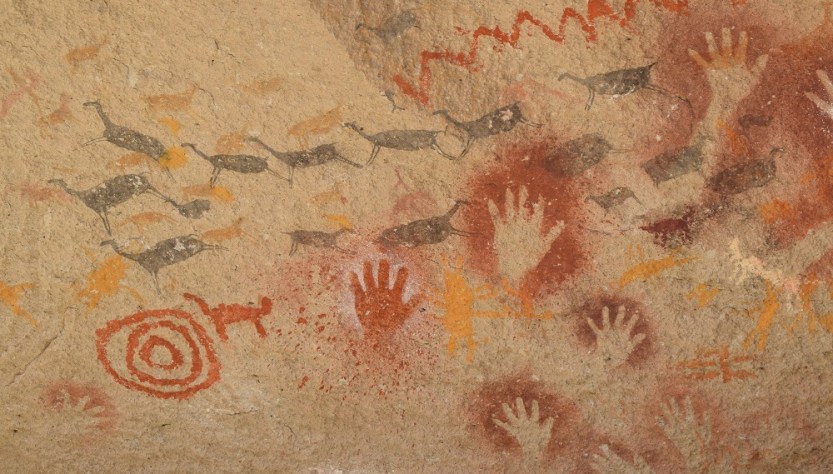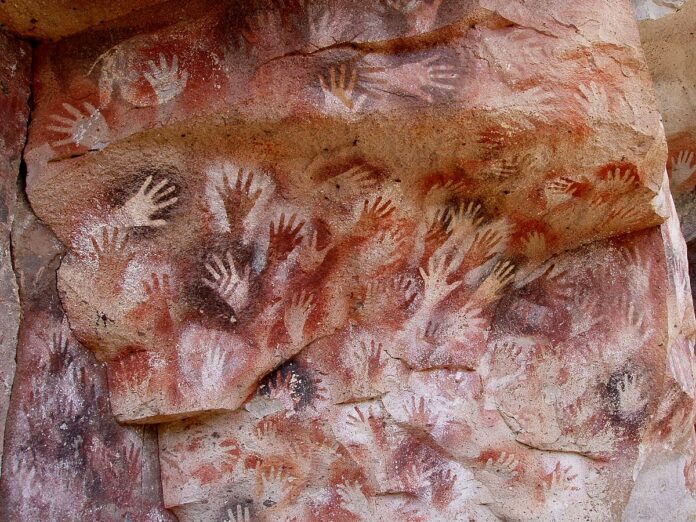Deep within the rugged hills of Argentina’s Santa Cruz region, a remarkable archaeological treasure lies hidden, untouched by the passage of time. The Cueva de las Manos, or “Cave of the Hands,” is a site that has captivated scholars and visitors alike, offering a tantalizing glimpse into the lives of the region’s earliest inhabitants. This remarkable assemblage of cave art, dating back between 13,000 and 9,500 years, stands as a testament to the ingenuity and artistic prowess of the region’s first peoples.
The Cueva de las Manos: A Window to the Past
The Cueva de las Manos is nestled within the stunning landscapes of Argentina’s Santa Cruz province, its rock shelters and caves adorned with an exceptional collection of prehistoric paintings. The site takes its name from the iconic stenciled outlines of human hands that adorn the cave walls, a technique that was employed by the region’s earliest inhabitants to leave their mark on the world.

But the Cueva de las Manos is so much more than just a collection of hand stencils. The cave walls and rock shelters are adorned with a rich tapestry of paintings, depicting a wide array of animals, hunting scenes, and other figures that offer a tantalizing glimpse into the lives and culture of the region’s first peoples.
Among the most prominent animal species depicted in the cave paintings are the guanacos, a camelid species still found in the region today. These graceful creatures are shown in various poses, from solitary figures to dynamic hunting scenes where they are pursued by human figures. The attention to detail and naturalistic rendering of these animals speaks to the skill and keen observation of the cave’s ancient artists.

Alongside the depictions of animals, the cave paintings also feature a number of hunting scenes, where human figures are shown engaged in the pursuit and capture of their prey. These scenes provide a unique window into the hunting practices and techniques employed by the region’s earliest inhabitants, offering valuable insights into their daily lives and subsistence strategies.
The Artistic Sequence and Cultural Significance
The artistic sequence of the Cueva de las Manos is a complex and multi-layered one, with three main stylistic groups that span a period of over 9,000 years. The earliest paintings, dating back to the 10th millennium BP (Before Present), feature the iconic hand stencils and more abstract, geometric motifs. Over time, the paintings became increasingly naturalistic, with the introduction of animal figures and hunting scenes.

The significance of the Cueva de las Manos extends far beyond its artistic merits. The site is considered by the international scientific community to be one of the most important archaeological sites in South America, offering a rare and well-preserved glimpse into the lives of the region’s earliest hunter-gatherer communities.
The rock art, the natural environment, and the archaeological sites in the surrounding area have been the focus of extensive research for over 25 years. The site’s exceptional state of preservation, coupled with its singular geological features, have made it a prime destination for scholars and researchers seeking to unravel the mysteries of Patagonia’s past.
The Cueva de las Manos stands as a testament to the enduring creative spirit of humanity. These ancient cave paintings, executed with meticulous care and attention to detail, continue to captivate and inspire people from around the world. They offer a window into a distant past, a time when the region’s first inhabitants left their indelible mark on the world, and in doing so, have ensured that their legacy endures long after they have gone.
As we gaze upon the sweeping landscapes and the extraordinary cave art of the Cueva de las Manos, we are reminded of the incredible resilience and ingenuity of the human spirit. These ancient artworks, spanning millennia, continue to capture the imagination and inspire us to connect with the rich tapestry of our shared past. In doing so, they remind us that the pursuit of knowledge and the celebration of our cultural heritage are vital to our understanding of the world and our place within it.
